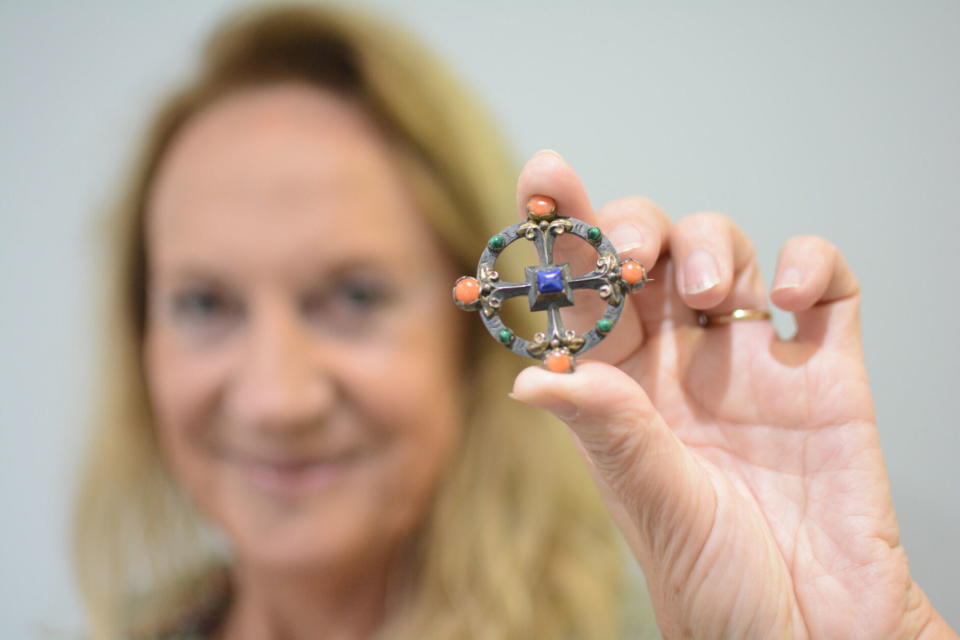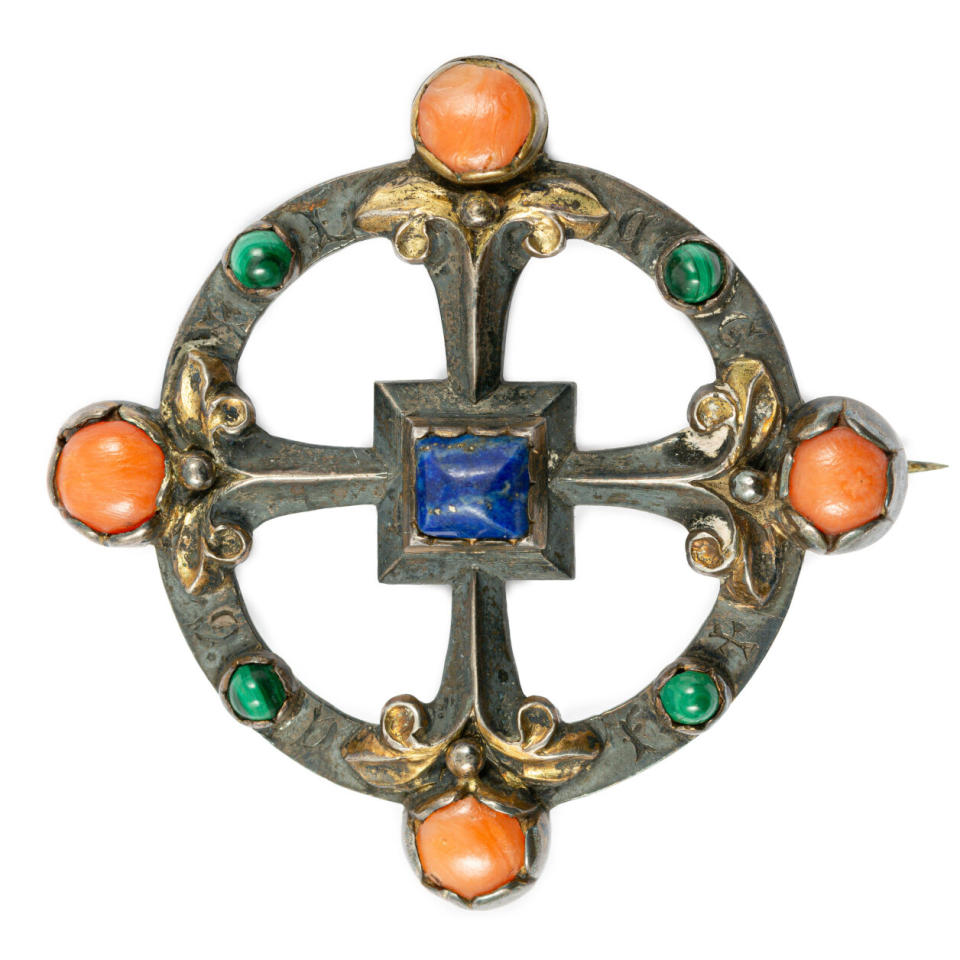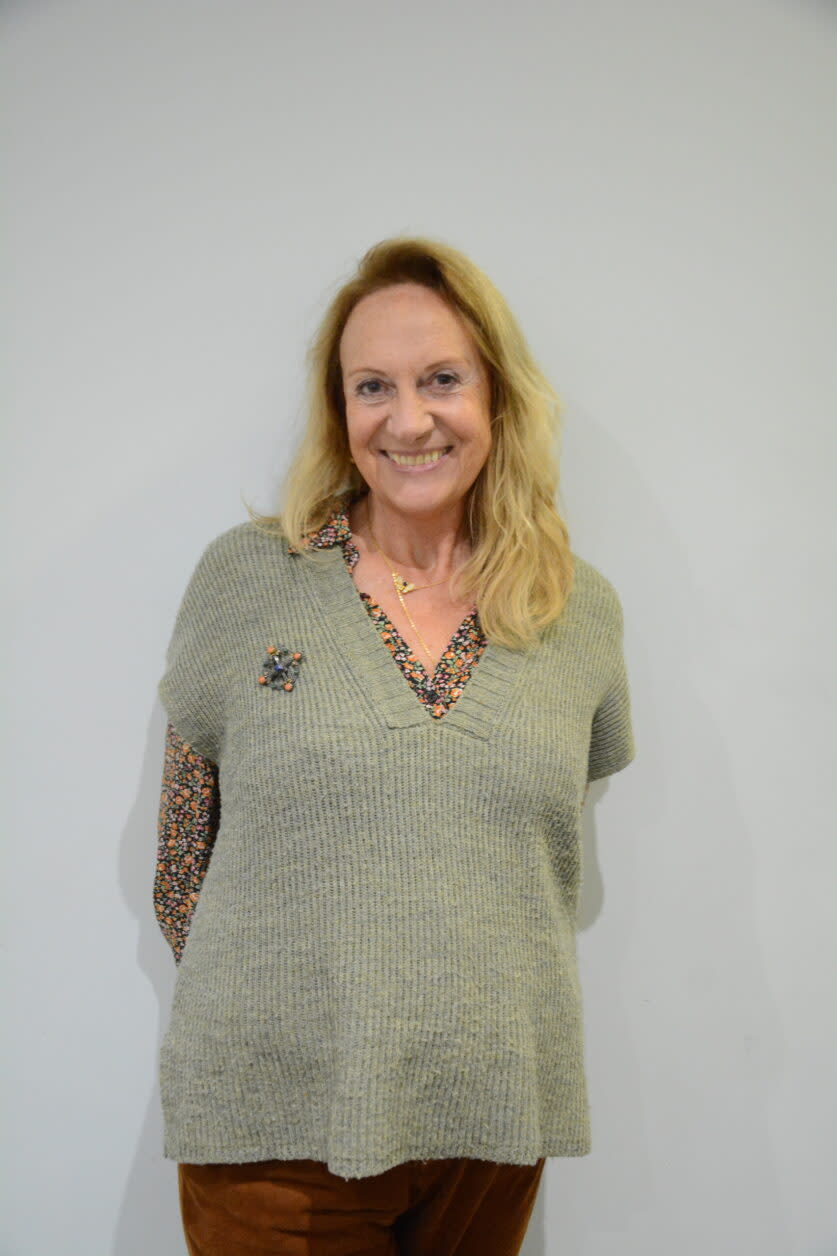She bought a brooch for $25. It could sell for $19,000.
Flora Steel was ambling through an antique fair in central England about 30 years ago when she spotted an unusual-looking brooch. She bought it for less than $25.
“I love color. That’s why this brooch caught my eye,” recalled Steel, who was then in her early 30s. “Having studied art history, I could sort of spot a good design.”
But Steel had no idea at the time just how good of a design it was. More than three decades after she bought the brooch, she learned that it was designed by renowned English architect and designer William Burges, probably sometime in the 1860s. It was recently valued at around $19,000.
“It was so shocking,” said Steel, who lives in Rome and is an art historian and consultant. She has been collecting silver jewelry as a hobby since she was 13.
The gothic-style brooch - composed of silver, lapis lazuli, malachite and coral - is now by far the most prized piece in her modest collection.
The stunning discovery came about March, when Steel was browsing YouTube and was served up a 2011 clip from “Antiques Roadshow,” a television program broadcast by the BBC. The clip compiled the show’s “Most Wanted Finds.”
In the short snippet, jewelry specialist Geoffrey Munn showed several sketches of brooches designed by Burges, who was known for his Victorian Gothic Revival style. Steel paused the clip when she noticed that one of the brooches looked familiar. Upon further inspection of the sketches, it seemed identical to her brooch.
“It just popped up out of the blue; I wasn’t looking for it,” Steel said. “It was one of those extraordinary things. I thought I was dreaming, especially after so long.”
Steel had initially worn the circular, cross brooch on a green coat with a velvet collar for three years. Then, it remained in her closet for 20 years, until her future daughter in-law spotted it and started wearing it herself, to Steel’s delight.
Astonished by the revelation, Steel asked her son - who lives in London with his wife - to take some photos of the pin. She then contacted Gildings Auctioneers in Leicestershire, England, as they had previously auctioned off two other Burges brooches, both of which were discovered the same way Steel’s was - through watching “Antiques Roadshow” and connecting the dots.
Will Gilding, director of the auction house, examined the images Steel sent and said he right away knew.
“We were indeed looking at another lost brooch of Burges,” he said.
The first brooch was sold by Gildings for more than $39,000 in August 2011, and the second was sold in a private sale to the Victoria and Albert Museum in London - which is where Burges’s original design sketches are archived.
The three brooches were created for two weddings and were intended to be worn by bridesmaids. The first two brooches were for one wedding, and Steel’s brooch was for the other. Based on the sketches, which are annotated with details, Burges made six silver brooches for the second wedding and three in gold.
Gilding got in touch with the “Antiques Roadshow” team and Munn to let them know that yet another of Burges’s brooches had been found. Steel traveled to Britain in July to show Munn the brooch in person. She was featured in Antiques Roadshow’s Christmas special, filmed at Alexandra Gardens, about a 10-minute walk from Cardiff Castle - a medieval structure in Wales that was remodeled by Burges between 1865 and his death in 1881.
“The excitement and the thrill is absolutely phenomenal,” said Munn, who verified the brooch’s authenticity. “I didn’t have any doubt whatsoever.”
The pin’s intrinsic value, Munn said, would be about $40, based on the materials it is made of. But given its historical significance, it is likely to fetch more than $19,000.
Steel’s brooch is larger than the other two Burges brooches that were discovered, Munn said.
“It looks very medieval and slightly mythical,” he explained, calling the discovery of the brooch “heart-stopping stuff.”
“He’s possibly the most eccentric and animated gothic architect of the 19th century,” Munn said of Burges.
Steel studied 18th-century European art and architecture, as well as early 19th-century Venetian art and architecture, and so had never came across Burges’s work. Still, it was a thrill to figure out.
“The joy of the discovery for me is the personal and professional satisfaction as an art historian,” she said.
For the past two years, Steel was fighting breast cancer. She said discovering the brooch’s origins has lifted her spirits.
“It’s done a great deal for my morale in a difficult moment,” she said, noting that she is now cancer-free. “It’s cheered me up and given me a lift.”
Steel initially contemplated keeping the brooch as part of her small jewelry collection but decided auctioning it was a better choice.
“I’d be too frightened to wear it now,” she said.
She said she will give the proceeds to her son and his wife, and she plans to donate a portion to a breast cancer research fund.
“It’s a happy windfall, and it would be useful for him,” she said of her son, whom she described as having a growing family.
The auction is set for March 5 and is expected to draw interest from museums and collectors, among others, Gilding said.
“I am looking forward to it,” Steel said. “It’s been a very entertaining, incredible happening.”
Related Content
DeSantis faces a bleak path ahead as he shifts resources to S.C.
How will you be remembered? Here’s how to adopt a ‘legacy’ mind-set.
This humble fish may help the Supreme Court weaken the ‘administrative state’



